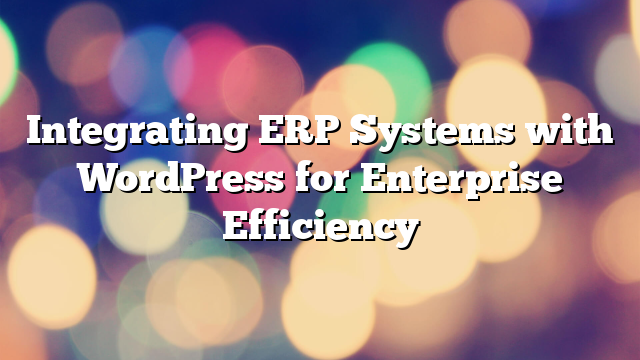WordPress and Next.js: A Perfect Pairing for Enterprise Websites
28.04.2025

As enterprise websites grow in complexity and scale, organizations are increasingly seeking solutions that offer speed, flexibility, and a seamless user experience. One such solution that has gained significant traction is the combination of WordPress and Next.js. By merging the power of WordPress as a content management system (CMS) with the cutting-edge capabilities of Next.js as a frontend framework, businesses can create high-performance websites that are both scalable and user-friendly. Let’s explore why this pairing is revolutionizing enterprise web development.
Why WordPress and Next.js are a Perfect Match
WordPress has long been the go-to CMS for creating flexible and dynamic websites. Its extensive plugin ecosystem, ease of use, and content management capabilities make it a top choice for enterprises worldwide. However, when it comes to performance, especially in terms of speed, WordPress sites can struggle due to the reliance on server-side rendering and database queries.
This is where Next.js comes in. As a powerful React-based framework, Next.js brings features like static site generation (SSG) and server-side rendering (SSR) to the table, enabling websites to load faster and perform better. When combined with WordPress, Next.js acts as the frontend while WordPress powers the backend. This separation, often referred to as “Headless WordPress,” allows businesses to take full advantage of both platforms’ strengths.
The Advantages of Combining WordPress and Next.js
When integrated correctly, WordPress and Next.js offer several distinct advantages:
- Improved Performance: By using static site generation (SSG) in Next.js, pages are pre-rendered at build time, which significantly reduces load times and improves the overall performance of the website.
- Scalability: Next.js allows businesses to scale their website efficiently, handling large volumes of traffic without compromising on performance. WordPress, on the other hand, provides a robust content management system capable of managing vast amounts of content.
- Enhanced SEO: With Next.js, pages are pre-rendered and served as static files, which search engines can crawl more easily. This leads to improved SEO rankings and better visibility on search engines.
- Flexibility and Customization: WordPress can be fully customized with themes, plugins, and APIs, while Next.js enables developers to create interactive and dynamic user interfaces without limitations. Together, they allow for highly personalized web experiences.
How to Integrate WordPress with Next.js
The process of integrating WordPress and Next.js is straightforward, thanks to WordPress’s REST API. The WordPress REST API allows developers to fetch content stored in WordPress and display it on a Next.js site, enabling dynamic and real-time content updates. Here’s a brief overview of the steps involved:
- Set up WordPress as a Headless CMS: Install WordPress and enable the REST API to expose content to Next.js.
- Create the Next.js Frontend: Use Next.js to build the frontend, leveraging static site generation (SSG) for performance optimization.
- Fetch Content from WordPress: Utilize the WordPress REST API to fetch content like posts, pages, and media from the WordPress backend and display it on the Next.js frontend.
- Deploy and Optimize: Once the integration is complete, deploy your site to a platform like Vercel or Netlify for optimized performance, and ensure all caching, SEO, and security practices are in place.
Enterprise Use Cases for WordPress and Next.js
The WordPress-Next.js combination is particularly beneficial for enterprise-level websites where performance, scalability, and user experience are paramount. Here are some typical use cases:
- Corporate Websites: Enterprises with complex structures, multiple pages, and high traffic volumes benefit from the performance gains and ease of content management provided by this integration.
- eCommerce Sites: With the ability to integrate with WooCommerce and other plugins, WordPress and Next.js can be used to build lightning-fast, scalable eCommerce platforms that can handle high volumes of transactions.
- Multi-Language Websites: Enterprise websites that need to support multiple languages and regions can leverage Next.js’s internationalization features while using WordPress to manage multilingual content seamlessly.
Conclusion: The Future of Enterprise Websites
The combination of WordPress and Next.js is a game-changer for enterprises looking to build fast, scalable, and dynamic websites. With the flexibility of WordPress as a headless CMS and the performance optimizations of Next.js, businesses can create highly engaging web experiences that meet modern demands. Whether you are building a corporate website, an eCommerce platform, or a content-heavy blog, integrating WordPress with Next.js ensures that your website will stand out in terms of speed, performance, and user engagement.
If you are interested in exploring the potential of WordPress and Next.js for your enterprise website, contact us today at Vipe Studio for expert guidance and custom solutions tailored to your business needs.



